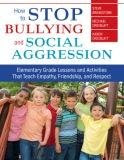I recently viewed the movie
An American Girl: Chrissa Stands Strong. It’s about a fourth grader and her friends who deal with bullying from a more popular girl in their class. I recommend it for kids between 2
nd and 5
th grade. Older kids might enjoy it, too, and I’m sure can relate to some of the bullying issues and how easily some adults just ‘miss’ the aggressive behaviors that is right in front of their face. Children, parents and educators can all learn good bully prevention strategies which is the strong point of this movie.
The bullying was realistic and showed examples of physical, verbal, social and
cyber bullying. Some of the bullying was more sophisticated than average 4
th graders might express, but then again, some bullies are way above average.
Chrissa, the main victim, and other victims were typical 4
th grade girls who, realistically,
didn’t know how to deal with the situation. The bullying continued until situations had risen to a level whereby parents and teachers had to be involved. Often, the kids themselves made some very good choices, too, to stop the bullying.
The adults
didn’t handle the situations very well at first. For instance, trying to find out who the main culprit was in a given situation, the principal and classroom teacher asked the students for information while all the students - victims, aggressors, and bystanders - were all together. Of course, no one was willing to risk speaking up. Separate discussions would be much more effective. Also, some of the consequences imparted on the aggressors had nothing to do with the bullying. I would have liked to see consequences that would teach pro-social behaviors and empathy instead of suspension and ‘towel clean-up’ that had nothing to do with the offense. Changing behavior and/or teaching replacement skills is a lot more effective in stopping a bully from bullying again. Of course, if the adults had taught all the students how to react to bullying before bullying began, and/or had ‘nipped’ the bullying in the bud before it got severe, this would have been a very short movie.
The movie accurately expressed how confusing a bullying situation can be for any young child. Without information and strategies to deal with bullying, the children in this movie used trial and error solutions such as hiding in toilet stalls, staying home from school, and avoiding after school activities. They were also hesitant to talk to adults. Fortunately, it addressed these realistic responses with ultimately having the children learn that talking to an adult is not tattling, but asking for help. Ultimately, the adults were very helpful. To move the story along, the writer had them be somewhat clueless and
naïve at first, but they were always supportive and came through in the end to help the victims.
The movie is enjoyable to watch and many youngsters will be able to relate to the storyline. I recommend the movie as an opportunity to discuss bullying with children and strategies they can implement if they are bullied or witness bullying. In real life, we want kids and adults to know how to stop bullying before it becomes an abusive situation that last for weeks. At the risk of being self-serving, using the lessons and activities in our book
How to Stop Bullying and Social Aggression would help children learn the skills the characters in the movie would have appreciated, such as how to stand up to a bully, how to stop a peer from bullying another, and how to determine when talking to an adult is telling and not tattling.
Check out the
table of contents of our book to get idea of what skills kids need to develop to stop bullying. Or, for sample lessons go to
http://balanceeducationalservices.com/resources.htmlIf you saw the movie, share your thoughts.
Steve


